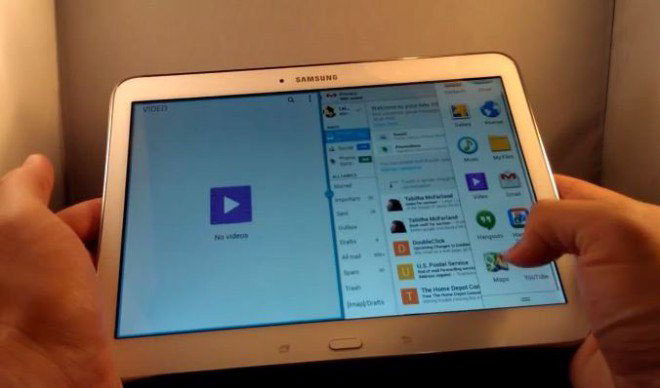

Step I : Analysing the present Android tablet app
Conducted a Cognitive walkthrough of the present application. Some of the painpoints in Movie Overview Page were:
1. The swiping feature for the desk of photo cards wasn't intuitive for the user.
2. There was no movie synopsis on the movie overview page.
3. Users could not distinguish between the Fan Reviews and Critics Reviews.

Step II: Conducted User study of the present app with video recordings showcasing User behaviour.
1. Observed the way participants used the app.
2. Took notes of the pitfalls, user requirements and User likings.
3. Tried to capture their thought process for each task.

Step III: Developed personas based on user base research data.
Went through the research about different user types and their requirements. Most important insights from this activity were considerating the Frustrations and Drivers for each user type. Understanding their frustrations and drivers helped get a better insight into their personas.
Persona development was an iterative process involving various stakeholders ( like developers, product managers, visual designers etc). There was a continous feedback loop from the stakeholders, supporting this process.

Step IV: Conducted Empathy Mapping with stakeholders.
Empathy Mapping is an activity where various stakeholders collaborate together to think about how each persona thinks, feels, does, says, see and hear in reference to the application. It also includes a user's pains and gains.
Involving different stakeholders in this activity helped bring up the different perseptives of various stakeholdering regarding the app. It also helped keep stakeholders interested and on the same page. It helped develop a better informed personas.

Userflow(Part 1) for one of the high priority personas.

Userflow(Part 2) fpr one of the high priority personas.
Step VI: Developed User Flows
These user flows described the process flow for each of the major user task. It helped realise user's thought process while making various decisions and hence their requirements. It helped inform the cognitive walkthrough.

Step V: Planned an actual Movie outing with the entire design team.
This helped in realizing the practical pitfalls and requirements of the user. It helped us recognize various places where the app could help users in their decision making process.
Example: Map with a picture of the theatre helps user recognize the theatre faster than the name of the theater.

Step VI: Developed Sitemaps using Omnigraffle.
Sitemaps describe the hierarchy of things in an application. It helped us link various functionalities according to task to be performed and user expectation.

Step VII: Sketching
All the information gathered till now were converted into sketches. This process involved sketching various alternatives for each screen as well. Design Charette with other designers was conducted to brainstrom the different ideas.

Sketch I:
Requirements:
Theater page to showcase information about a particular theater.
User Study:
1. Some user's movie decisions depends on movies being played in particular theaters.
2. Theatre information details required by the user. Example: Address, map, movies, showtimings etc.
Design:
1. Include Map and location information in theatre page.
2. Calender visualisation helped user's in making the right selection.
3. Users look for the next few showtimings.
4. Accessibility options are important to be displayed explicitely.

A sketch to display multiple theatres sorted by distance from the user. The movies played in those theatres is showcased as well.

A screen to display multiple theatres and its correscponding information.
Sketch II:
Requirements:
A list of theaters for user's going through the process flow of choosing a theater first and then the movie.
User Study:
1. People have some nearest or favourite theaters.
2. People remember theaters by their location.
3. Theatre selection is based on movies playing in various theatres.
Design:
1. Include map and location in theatre list.
2. Minimal information on movies being played in theater enabled more number of theaters on the same page. This helped users to compare amongst different theaters.

Step VIII: developed prototypes using Axure RP. It was an iterative process with continuous feedback and validations by stakeholders

Prototype I
Requirements:
Movie overview page.
Movie overview page.
User study:
1. Participants from User study preffered all the movie information within one screen.
2. Users make movie decision based on time constarints.
3. Users want to share showtimings with other users.
4. Users might decide on a particular movie depending on its genre.
Design:
1. All information on one screen and no tabs.
2. Share button to share showtimings.
3. Hide synopsises and photos once the user has decided the movie and goes on to make decisons on showtimings and theater.
4. Filter showtimings.

Prototype II
User Study:
People make movie decision based on theatre location.
Design:
1. Another view of theater list via map view.
2. Users can toggle between theaters on the map to display all information required pertaining to a specific theater required to make movie decision.


